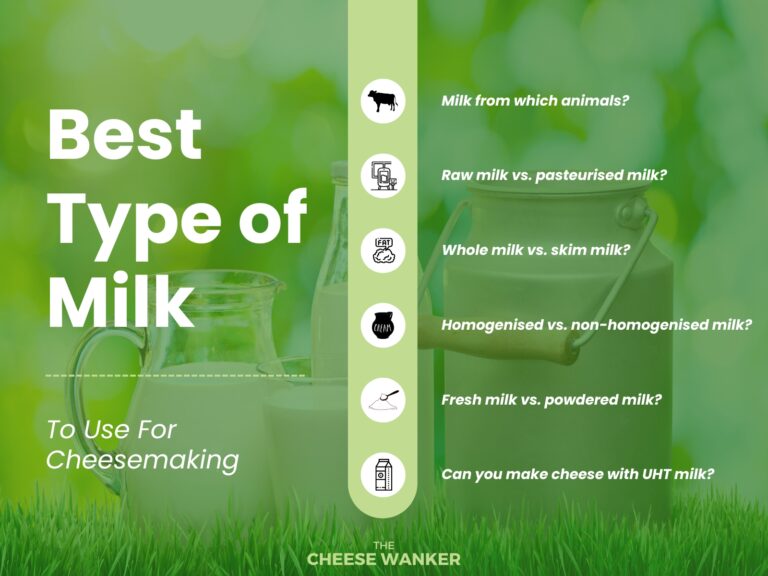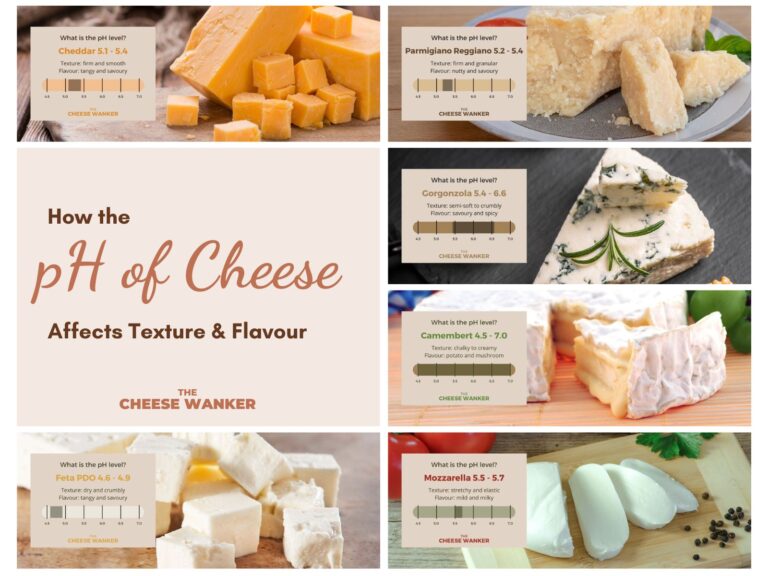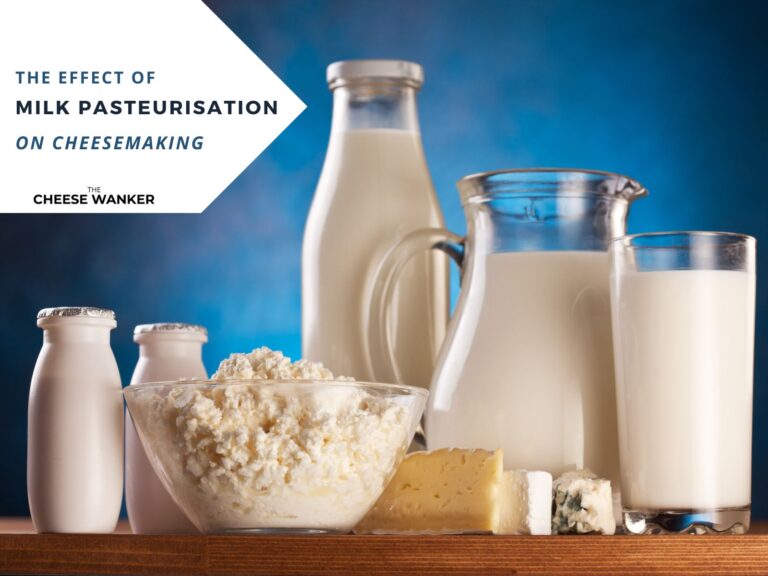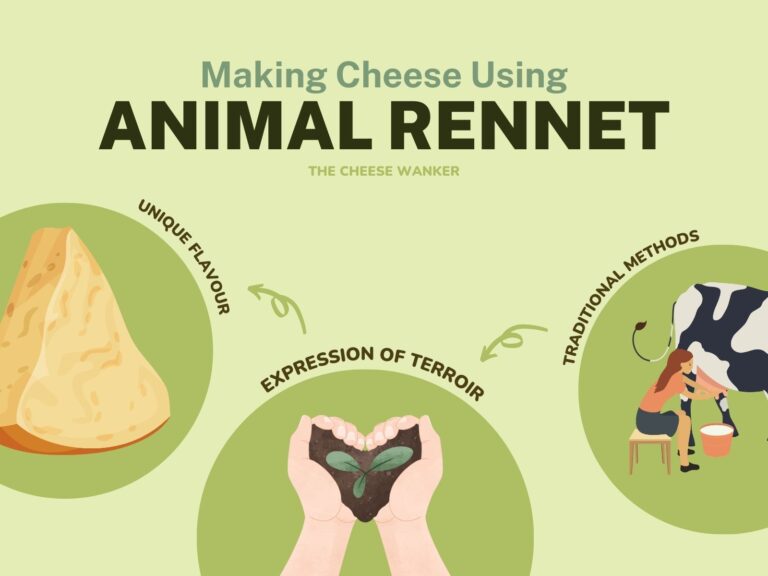Are you passionate about cheese and eager to explore the world of cheesemaking from the comfort of your home? Whether you’re a cheese enthusiast or a culinary adventurer, creating your own cheese can be a rewarding and delightful experience. However, to embark on this cheesy journey successfully, you’ll need the right tools. In this guide, we’ll explore the essential pieces of equipment you need for home cheesemaking.

[Disclaimer: This post contains affiliate links. If you use these links to make a purchase, we may earn a commission (at no cost to you)]
Why should you make your own cheese?
Home cheesemaking is not just a culinary activity; it’s a captivating journey that allows you to explore the rich heritage of cheese, experiment with flavours and create artisanal delights right in your own kitchen.
Whether you’re a novice or an experienced cook, making cheese at home offers a unique blend of science and creativity, transforming humble ingredients like milk, cultures and rennet into a wide array of cheeses.
One of the most beautiful aspects of home cheesemaking is the opportunity to personalise your creations. From the type of milk you use to the selection of cultures and ageing techniques, every step provides room for innovation.
Want an aged Cheddar with a hint of garlic? Or perhaps a creamy, herb-infused goat cheese? When you make cheese at home, you’re the master of your cheese’s destiny, allowing you to tailor flavours to your preferences and experiment with unique combinations.
How can you learn how to make cheese at home?
Finding recipes for making cheese at home has never been easier, thanks to the wealth of resources available online and in cookbooks. Here are a few places where you can discover a wide variety of cheesemaking recipes:
Cheesemaking websites and blogs
There are numerous websites and blogs dedicated to home cheesemaking. These platforms often provide detailed recipes, step-by-step instructions, and helpful tips for cheese enthusiasts. Some popular cheese-making websites include:
YouTube channels
Video tutorials on YouTube can be incredibly helpful, especially for visual learners. There are several YouTube channels run by experienced cheese makers who share their techniques and recipes. Here are some of our favourite ones:
Cheesemaking books
There are numerous books dedicated to cheesemaking, catering to beginners and experienced cheesemakers alike. Some popular titles include:
- Mastering Artisan Cheesemaking by Gianaclis Caldwell
- Home Cheesemaking by Ricki Carroll
- Artisan Cheesemaking at Home by Mary Karlin
Social media groups and forums
Platforms like Facebook and Reddit host communities of cheese enthusiasts. Joining these groups allows you to interact with experienced cheesemakers, ask questions, and share your own experiences.
One popular subreddit is r/cheesemaking on Reddit. And the largest group on Facebook is “Learn to Make Cheese”.
Local workshops and classes
Check if there are any local workshops or classes on cheesemaking in your area. Many communities have cheesemaking clubs or culinary schools that offer hands-on workshops. Learning in person from an experienced instructor can be invaluable.
Cheesemaking kits
If you’re a beginner, consider starting with a cheesemaking kit. These kits usually come with detailed recipes and all the necessary ingredients in pre-measured quantities. They’re a great way to familiarise yourself with the cheesemaking process.
Must-have equipment for home cheesemaking
Just like a painter needs quality brushes and a canvas, a home cheesemaker relies on a set of essential equipment to craft the perfect wheel of cheese. These tools will be the backbone of your cheesemaking endeavours, ensuring that you create cheeses that are not only delicious but also safe and consistent.
So, let’s explore the most important pieces of equipment that will take your cheesemaking to new heights.
1. Food-safe sanitiser
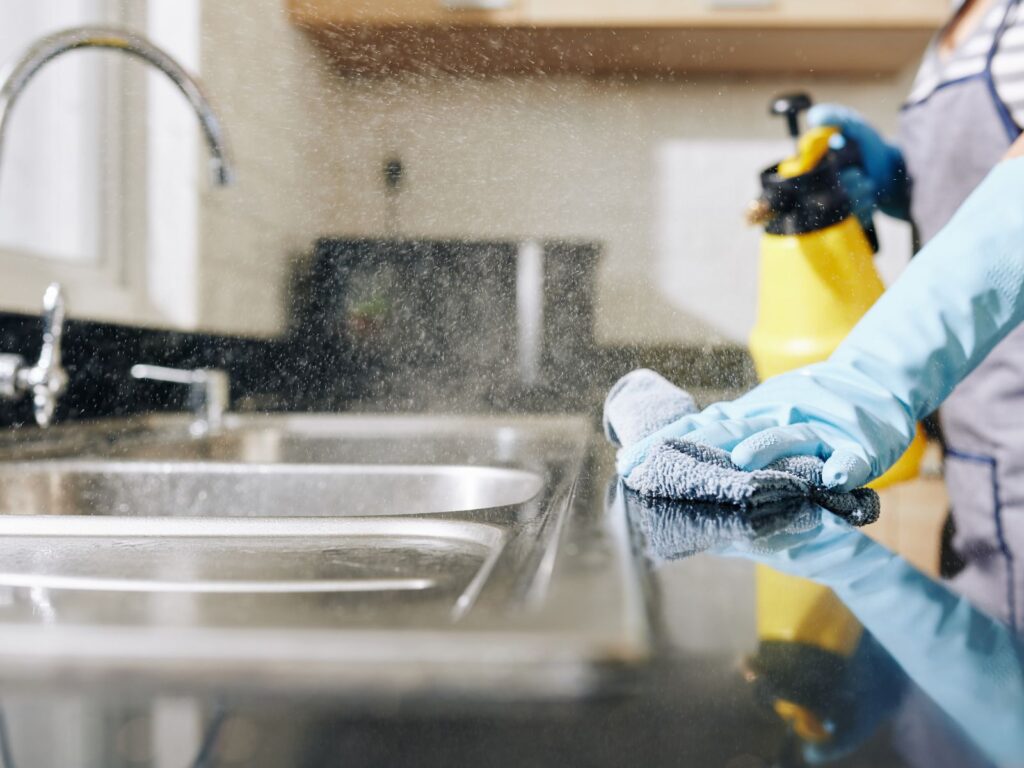
All the equipment used in cheesemaking, such as cheese pots, moulds, curd cutters and utensils, must be thoroughly sanitised before each use. Indeed, any residual bacteria from previous batches can spoil your new cheese.
Sanitisers effectively eliminate these contaminants, guaranteeing that your equipment is pristine and ready for the cheesemaking process.
There are several sanitisation methods commonly used in cheesemaking. The most popular choice is Iodophor, a no-rinse sanitiser that effectively kills bacteria and yeast.
Star San is another popular no-rinse sanitiser widely used by cheesemakers to ensure the cleanliness of equipment and surfaces involved in fermentation and food production processes.
Additionally, hot water and soap can be used for cleaning, followed by a thorough rinse to remove any soap residue.
2. Large cheese pot
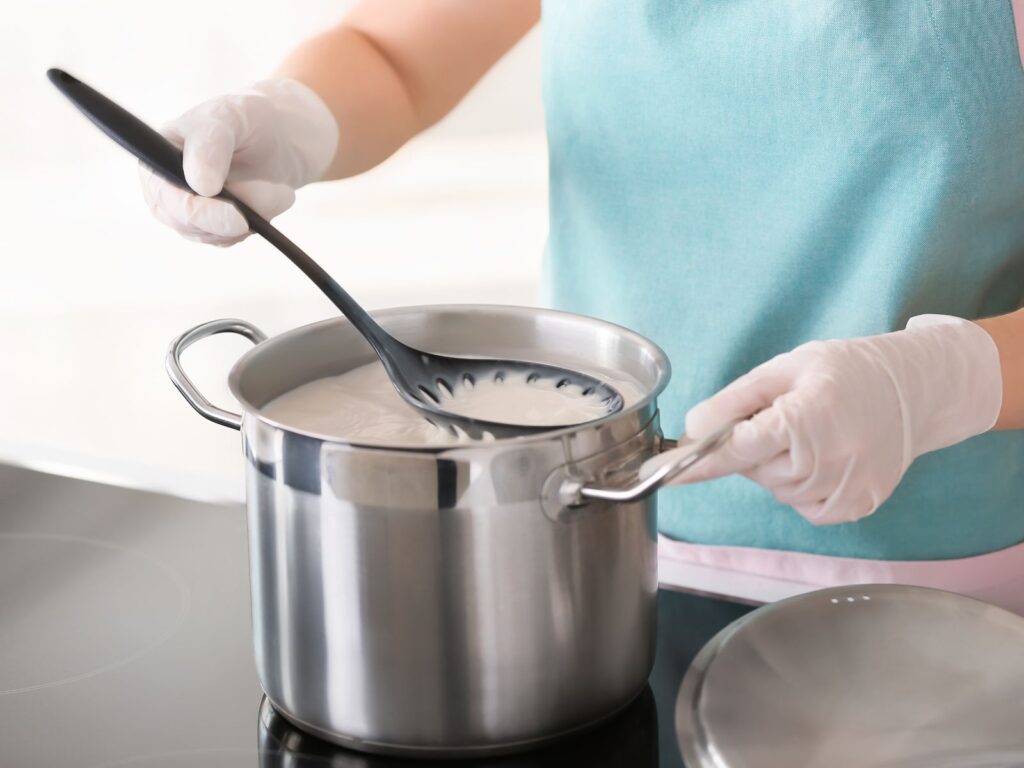
When making cheese at home, the choice of cheese pot is crucial to the success of your cheesemaking process. The type of pot you use can affect factors such as even heat distribution, prevention of scorching and ease of curd manipulation.
Stainless steel pots are a popular choice among cheesemakers. They are durable, non-reactive, and easy to clean. Stainless steel conducts heat evenly, making it ideal for precise temperature control during cheesemaking. Look for pots with a heavy bottom to prevent scorching, especially when heating milk for cheese.
Enamel-coated pots have a layer of porcelain enamel on the interior, which makes them non-reactive and easy to clean. These pots are suitable for cheesemaking, but it’s essential to avoid chipping the enamel, as it can lead to contamination.
Heat-safe glass pots, such as those made from borosilicate glass, are another viable option for cheesemaking, especially for small-scale home cheese production.
3. Milk thermometer
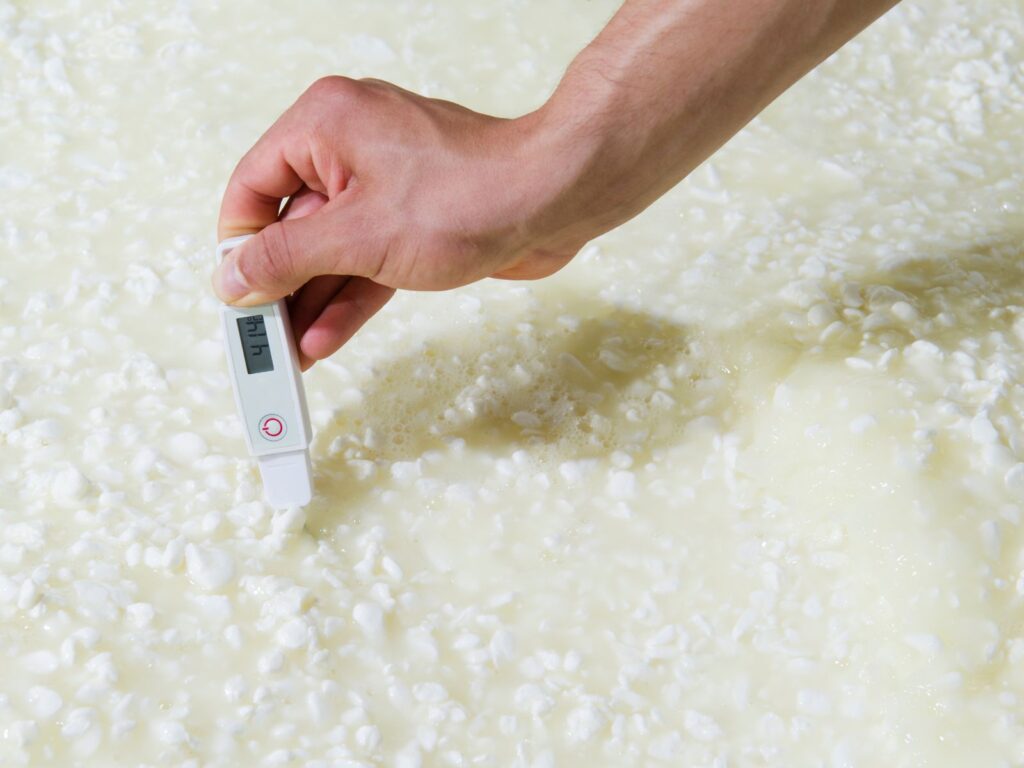
In the delicate art of cheesemaking, precision is key. Every degree matters and achieving the right temperature at each stage of the process can make the difference between a sublime cheese and a disappointing outcome.
Enter the humble yet indispensable tool: the milk thermometer.
Milk thermometers are designed to measure a broad range of temperatures, making them suitable for various cheesemaking techniques. Whether you’re gently warming milk for soft cheeses like Ricotta or heating it to higher temperatures for hard cheeses like cheddar, a milk thermometer provides the necessary versatility.
Furthermore, milk thermometers typically feature large, easy-to-read displays. This clarity is essential, especially when you’re monitoring the milk closely and need to make quick decisions based on temperature changes.
Some milk thermometers come with clips or immersion probes, allowing you to attach them securely to the side of your cheese pot or immerse them directly into the milk. These features provide hands-free operation, ensuring that the thermometer stays in place and provides accurate readings without the risk of falling into the milk.
4. Glass measuring cup
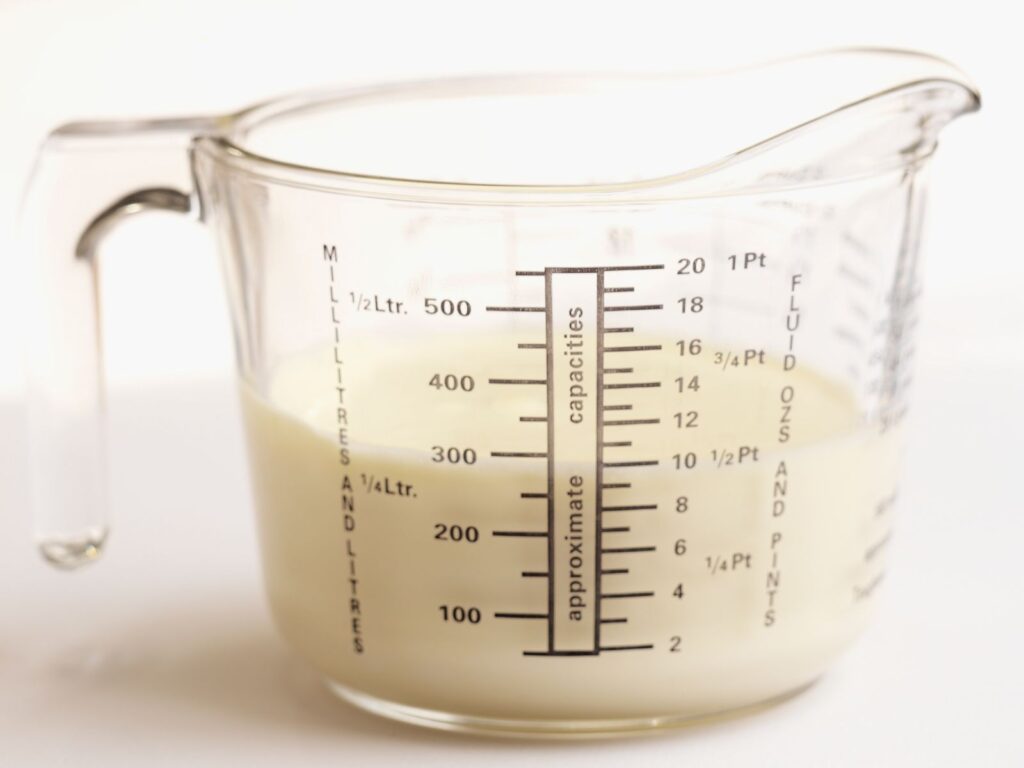
Glass measuring cups offer transparency and clarity, allowing cheesemakers to see the measured ingredients clearly. This visual clarity is particularly advantageous when dealing with milk and water, ensuring precise measurements every time.
Furthermore, glass cups are resistant to staining and odours, making them ideal for handling a variety of ingredients without the risk of contamination. Finally, they are easy to clean and maintain, ensuring the purity of measurements across different cheesemaking sessions.
5. Measuring spoons
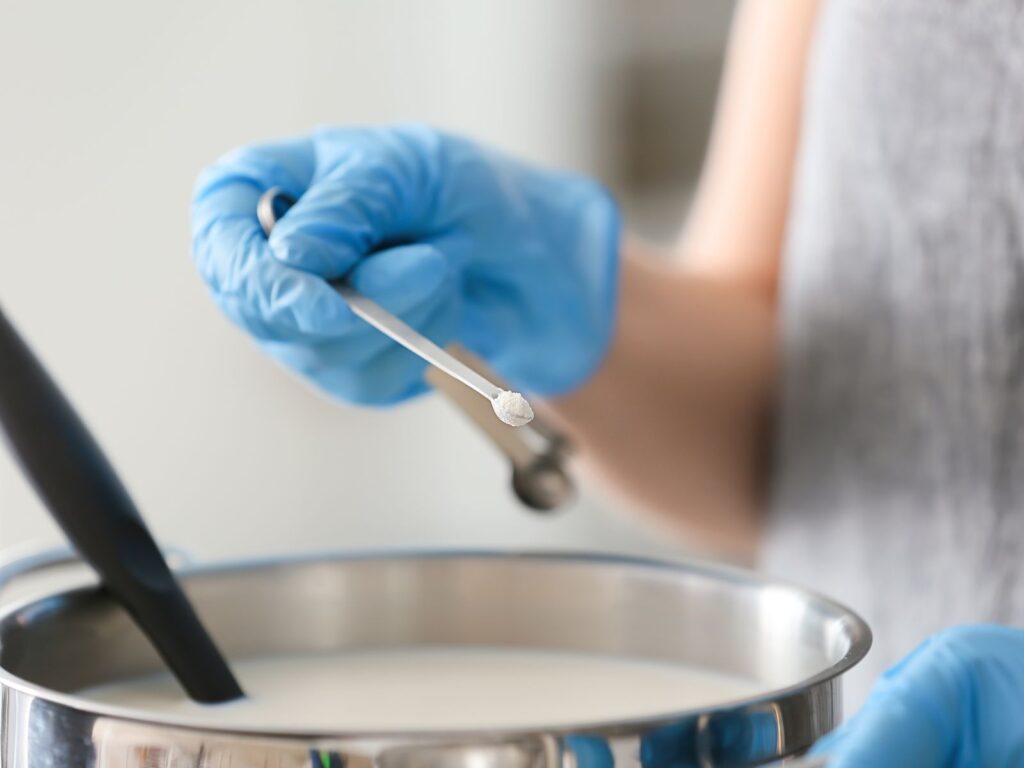
In the intricate world of cheesemaking, where even a fraction of a measurement can alter the entire outcome, stainless steel measuring spoons shine as essential tools. Their exceptional ability to measure minuscule quantities, down to 1/64 of a teaspoon, sets them apart as precision instruments in the cheesemaker’s toolkit.
Stainless steel measuring spoons not only excel in precision but also in practicality. Their smooth surfaces and non-porous nature make them incredibly easy to clean, ensuring no residue or flavour lingers between uses.
Unlike their plastic counterparts, these spoons resist stains and odours, maintaining their pristine appearance even after prolonged use.
6. Skimmer
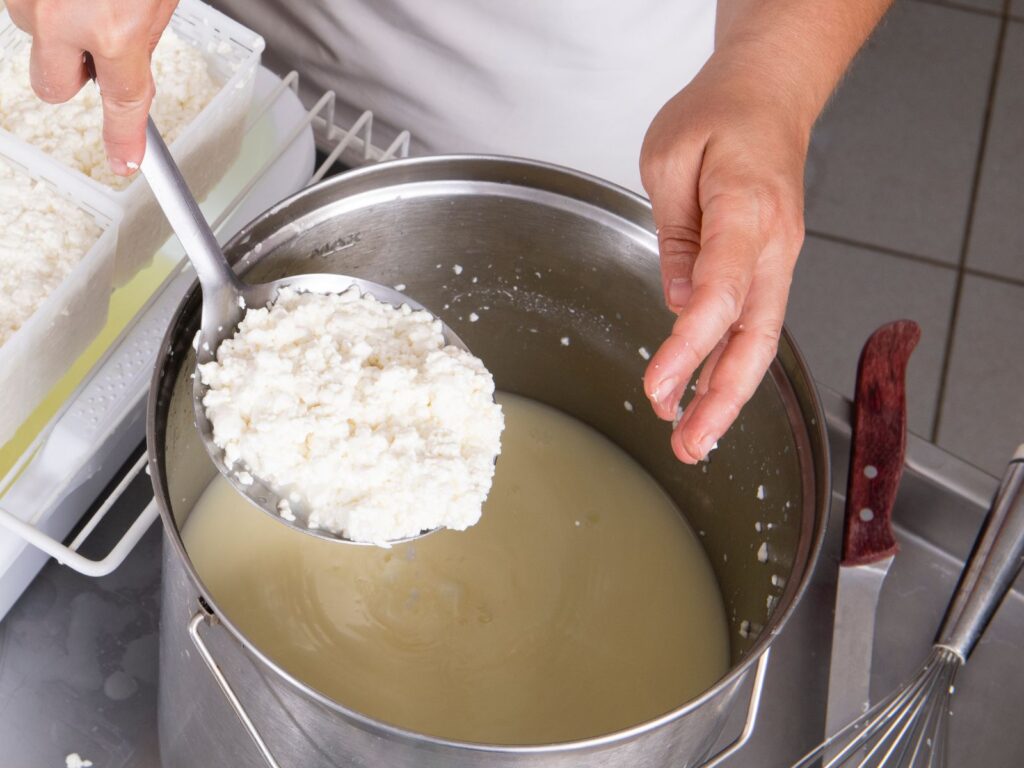
In the world of cheesemaking, a stainless steel skimmer is as an essential tool, vital for delicately handling curds and whey. Its fine mesh ensures the separation of curds without breakage, leading to the desired texture and flavour in the final cheese.
The durability of stainless steel guarantees longevity, allowing it to withstand the rigors of the cheesemaking process. Its non-porous, easy-to-clean surface maintains hygiene, preventing cross-contamination and ensuring the purity of each batch of cheese.
7. Curd knives
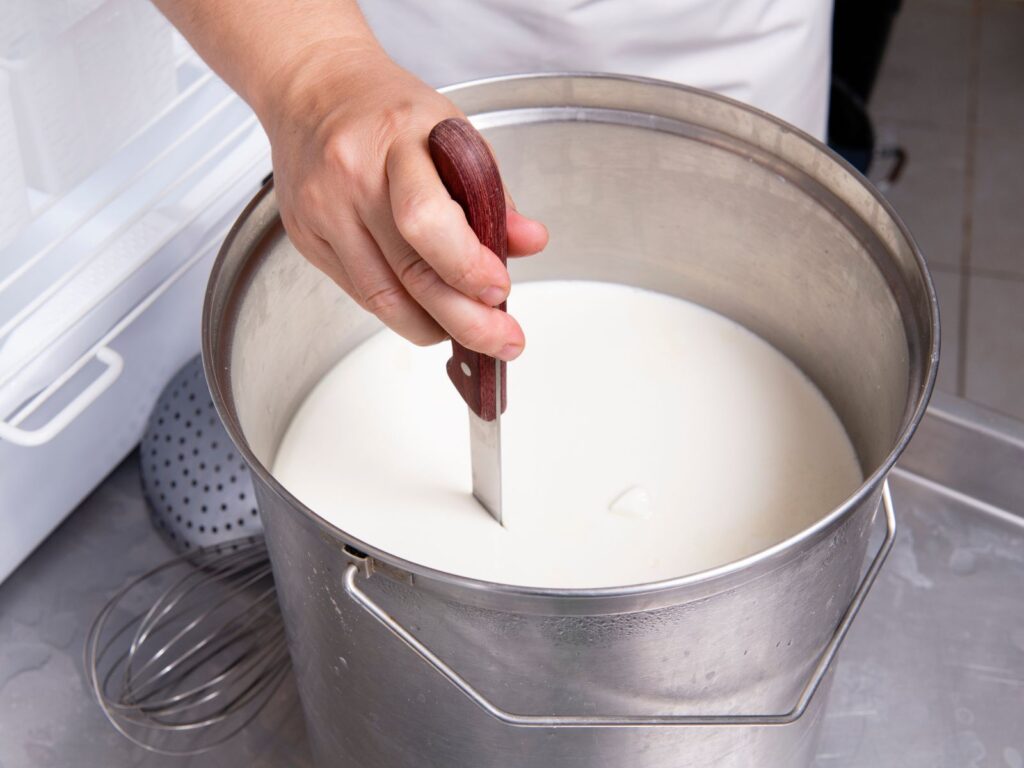
Curd knives, with their flat stainless steel blades, excel in precision curd cutting. Whether crafting soft, creamy cheeses or dense, aged varieties, the accuracy of these knives allows cheesemakers to achieve uniform curd sizes.
Besides, consistent curd sizes are crucial for even whey drainage and the development of desired textures, ensuring the perfect foundation for exceptional cheese.
Depending on the depth of the pot you’re using, you may need a different length of curd knife. Two of the most popular sizes have a 12-inch blade or a 14-inch blade.
8. Muslin cheese cloths
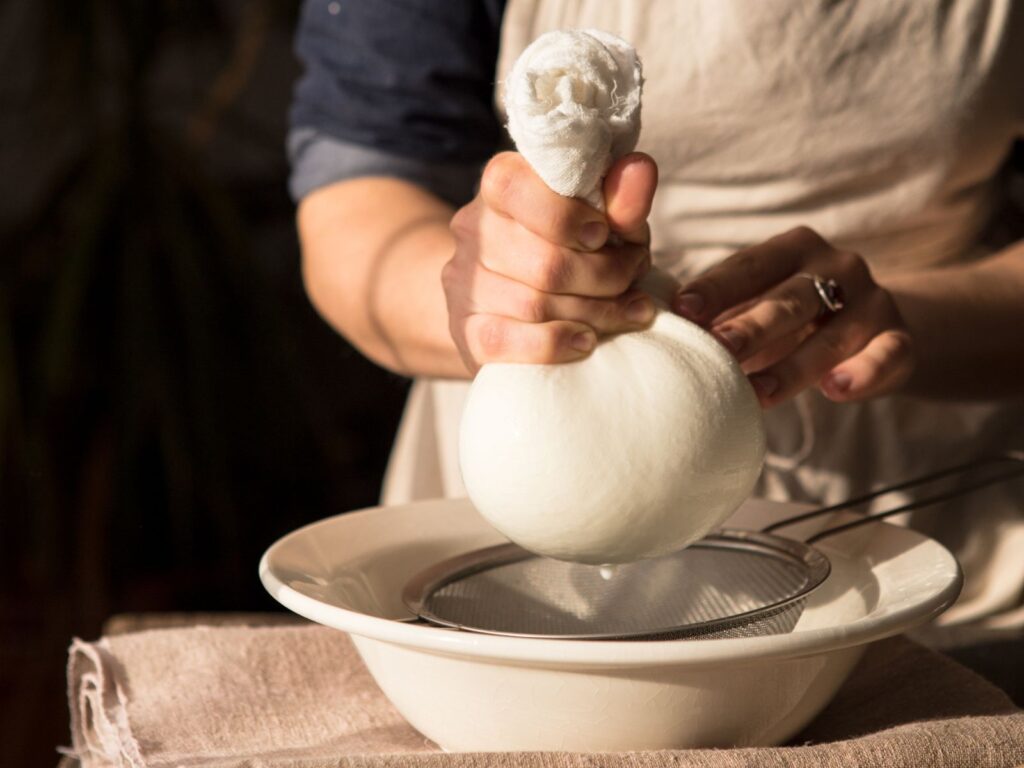
Typically made from natural materials, muslin cheese cloths play a pivotal role in draining whey, shaping curds, and enhancing the texture of the final cheese product.
One of the primary functions of cheese cloths is to aid in whey drainage during the cheesemaking process. When curds form, they need to be separated from the whey, a process essential for various cheese styles.
Cheese cloths are used to contain the curds while allowing whey to drain away, shaping the texture and moisture content of the cheese. The tight weave of the cloth prevents curds from escaping while facilitating the efficient removal of whey.
In addition to this, you can use cheese cloths cheese presses to shape and press the curds. They line the moulds, providing a barrier between the curds and the press, allowing excess whey to escape and encouraging the curds to compact into the desired shape.
Cheese cloths are traditionally crafted from natural materials, such as cotton or linen, which are woven into a fine mesh. These natural fibres are absorbent, allowing whey to pass through while retaining the curds.
9. Colander
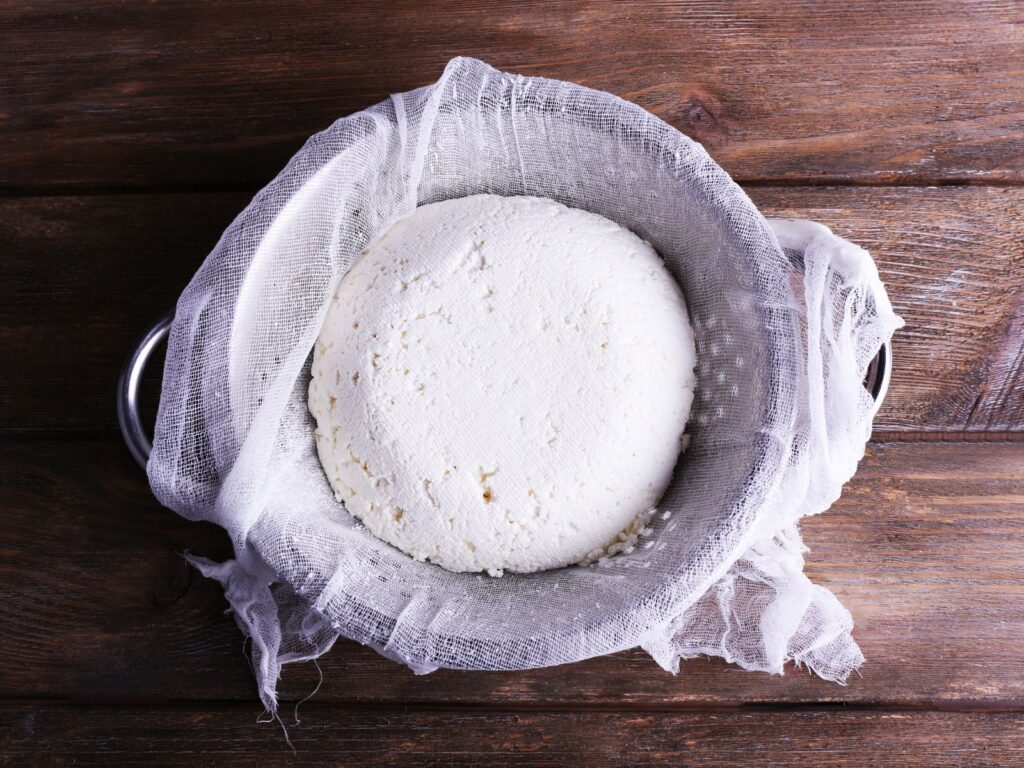
Colanders, with their perforated designs and sturdy construction, are indispensable tools in cheesemaking. Their primary role lies in efficiently draining curds by allowing whey to escape while retaining the formed curds.
When it comes to crafting delectable cheeses, choosing the right colander is crucial. Colanders used in cheesemaking are predominantly made of stainless steel or plastic.
Stainless steel colanders are popular due to their durability, corrosion resistance and non-reactivity with acidic curds. This makes them a reliable choice for cheesemakers, as they ensure the curds remain uncontaminated and retain their pure flavours.
Made from food-grade materials, plastic colanders offer a lightweight and affordable alternative. They are non-reactive and easy to clean, making them suitable for draining curds.
10. Hard cheese moulds
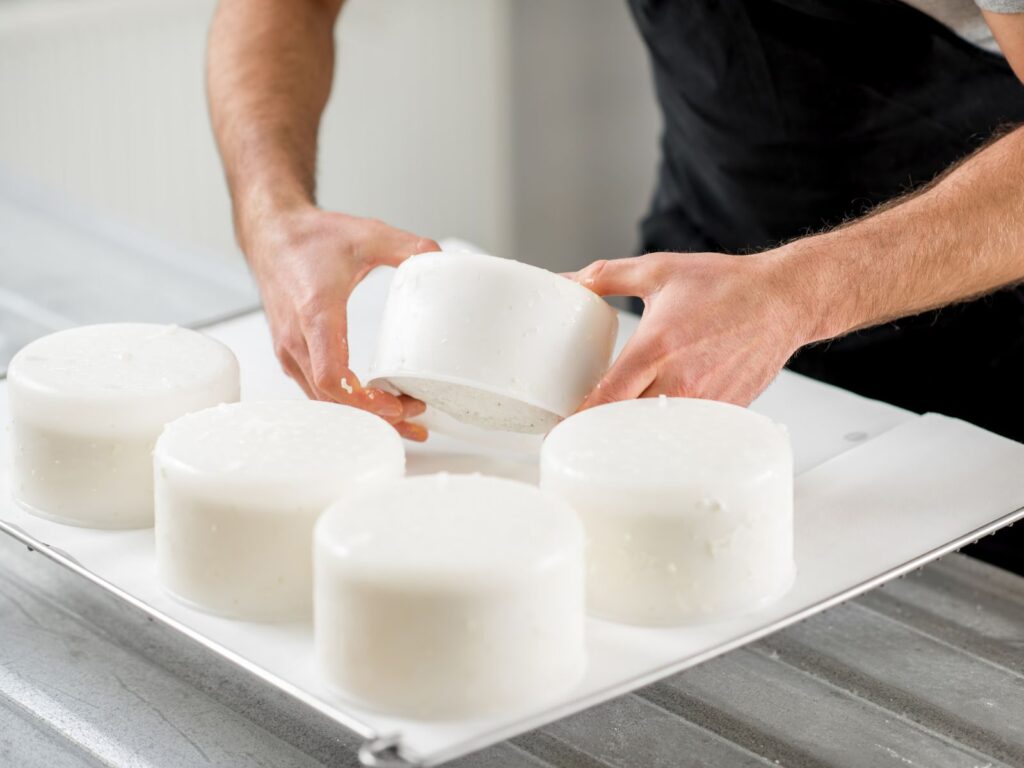
If you want to make hard cheeses, you need moulds. These moulds play a crucial role in the cheesemaking process, defining the texture, shape and ageing potential of hard cheeses.
Additionally, the specific design of the mould’s interior affects the cheese’s texture. A smooth interior produces a polished rind, while a textured one creates a distinct pattern, both enhancing the cheese’s aesthetic appeal. One great example of the latter is the Manchego mould which creates a herringbone pattern on the outside of the cheese.
Cheese moulds are primarily crafted from food-grade polypropylene plastic. They are non-reactive, easy to handle, and can be textured to create specific rind patterns.
Proper pressing, enabled by moulds with a follower, ensures the formation of a solid, even texture. This paves the way for successful ageing and the development of complex flavours.
11. Soft cheese moulds
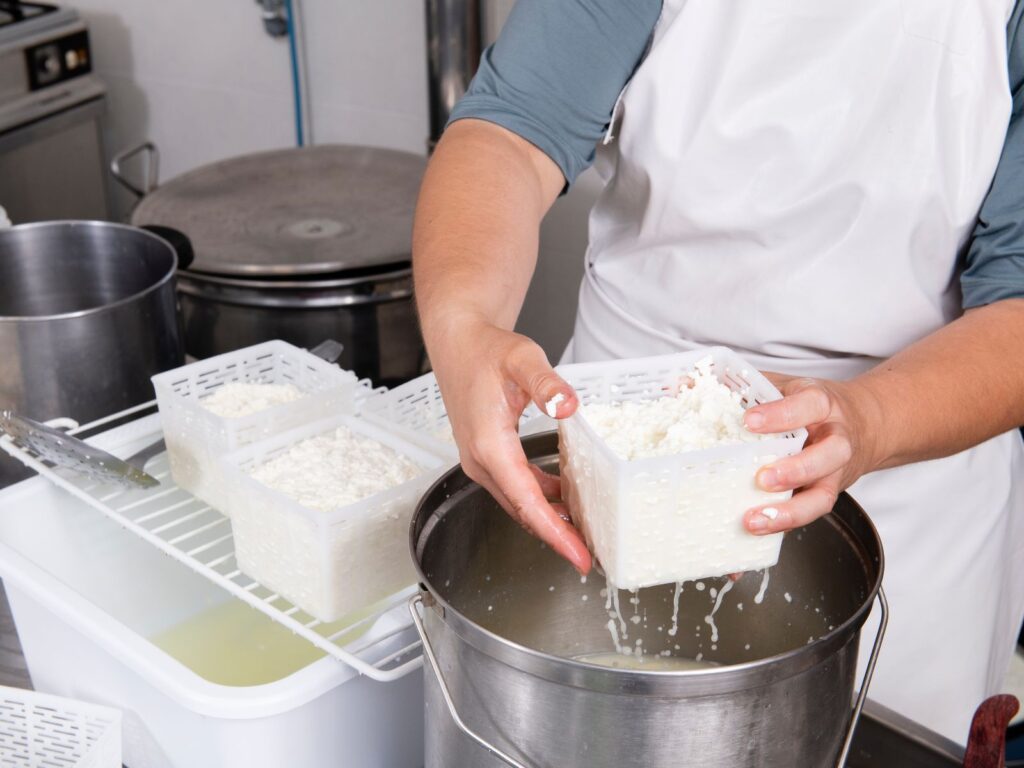
Soft cheese moulds are instrumental in creating the smooth, supple textures characteristic of cheeses like Camembert and Brie. The mould’s design ensures the cheese curds are gently compacted, allowing for whey drainage while retaining the desired creaminess.
Furthermore, the mould’s depth and width influence the cheese’s thickness, determining whether it will be a thin wheel or a thicker, heartier round.
Soft cheese moulds are commonly made from food-grade plastic. Effectively, plastic moulds offer practical advantages, such as durability, ease of cleaning and flexibility in design. Plastic moulds are lightweight and can be textured, allowing cheese makers to create unique surface patterns, enhancing the cheese’s appearance.
Of course, plastic moulds come in various shapes and sizes. Using the correct mould, you can try your hand at making round cheeses or square cheeses. If you’re feeling a bit more adventurous, you can attempt pyramid-shaped or heart-shaped cheeses!
12. Cheese press with tray
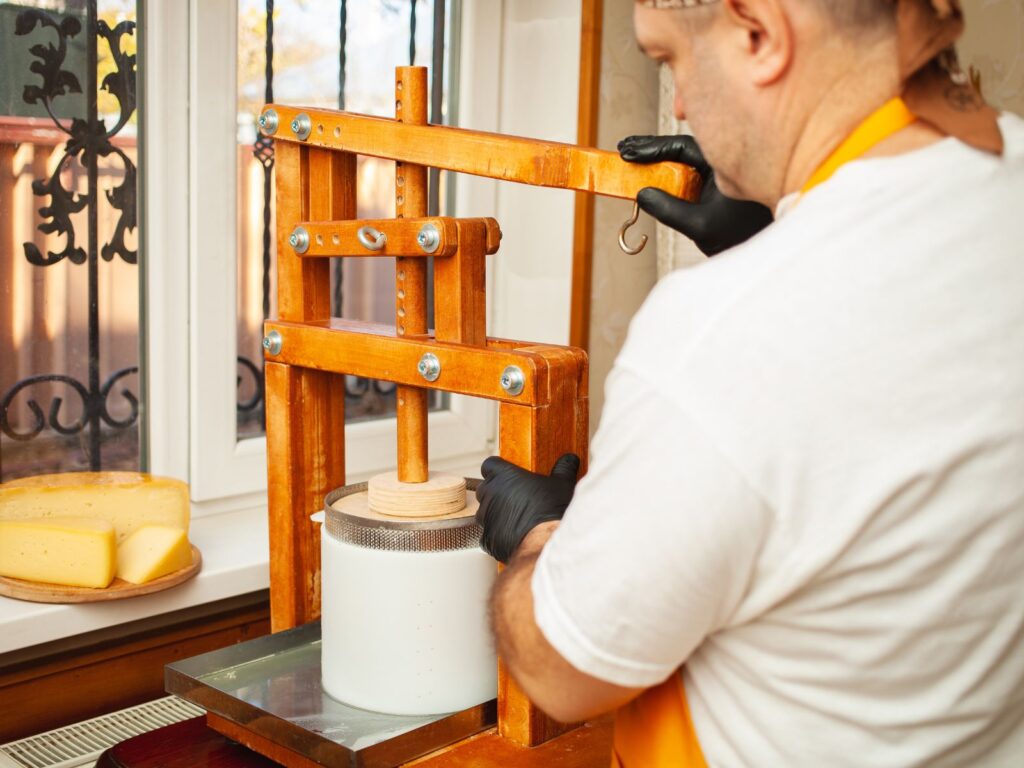
In the world of artisanal cheesemaking, a wooden cheese press stands as a time-honoured apparatus. This quintessential tool plays a fundamental role in cheese production, especially for harder and aged cheese varieties.
Wooden cheese presses are renowned for their ability to apply consistent pressure to cheese curds. Unlike harsher methods, the gentle compression preserves the delicate structure of the curds, ensuring they consolidate evenly without losing their essential textures.
This gentle approach is crucial for shaping hard cheeses like Cheddar, Parmesan or Gouda. Indeed, the cheese press allows for the gradual expulsion of whey while maintaining the cheese’s integrity.
13. Cheese draining mat
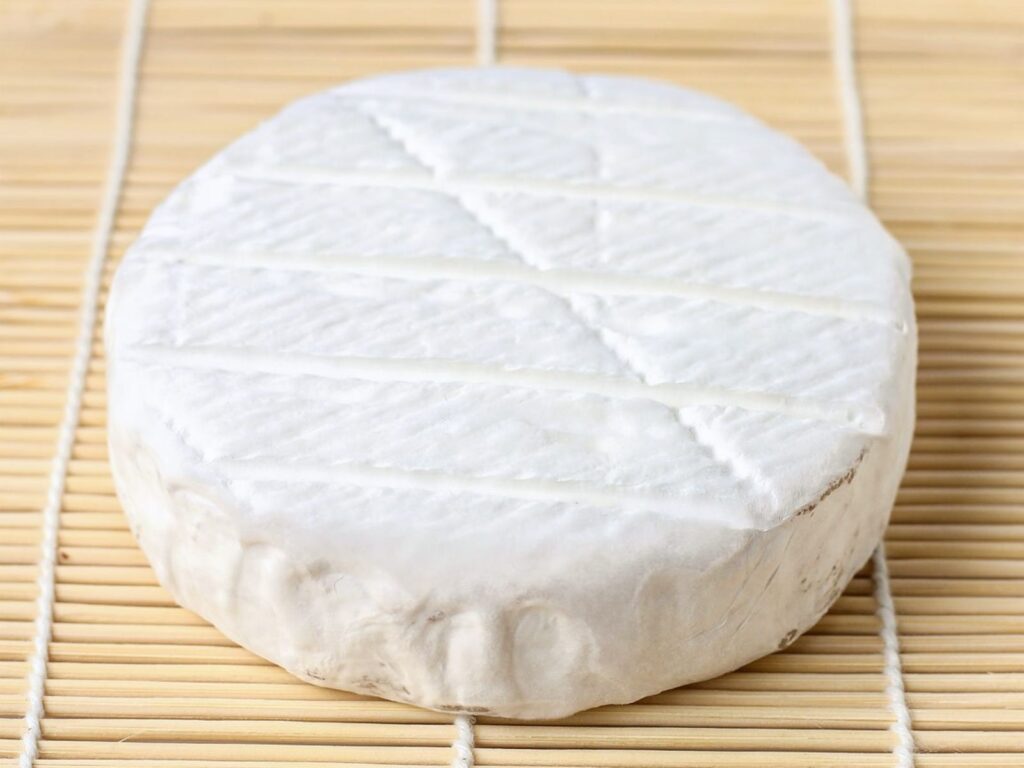
Cheese draining mats are typically made of food-safe plastic or natural bamboo. These versatile mats play a pivotal role in multiple stages of the cheesemaking process, aiding in draining, drying and ripening.
During the initial stages of cheese making, draining mats prove invaluable. Placed beneath freshly formed curds, their carefully designed perforations facilitate efficient drainage, allowing excess whey to escape.
After whey drainage, cheeses often need to air dry. These mats provide a breathable surface, allowing air to circulate around the cheese evenly. This controlled drying is vital for developing natural rinds and preventing undesirable mould growth.
Placed in cheese ageing environments, they provide the right balance of support and aeration. This controlled environment is essential for surface-ripened cheeses, encouraging the growth of specific moulds and bacteria.
14. Cheese wax
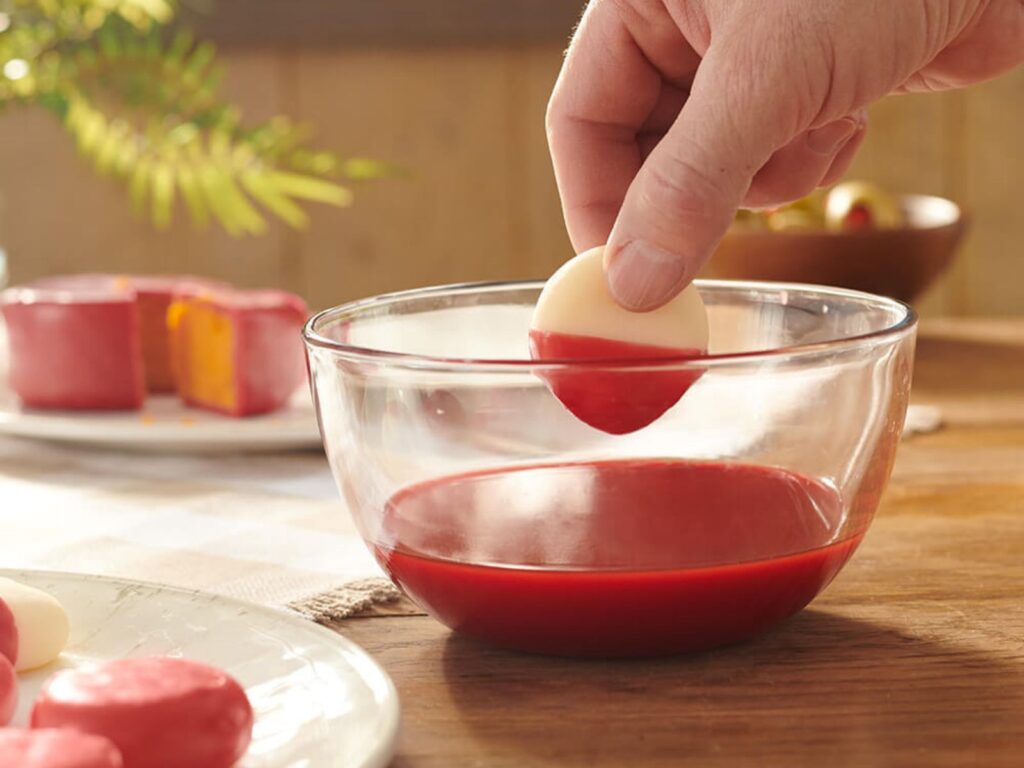
Crafted from a blend of food-grade paraffin or beeswax, cheese wax serves as a protective shield during various stages of cheese production and ageing. This specialised wax is instrumental in sealing the freshness of the cheese ensuring it matures to perfection.
Applied while the cheese is still young, the wax forms a protective layer that seals in moisture and freshness. By preventing excessive moisture loss, cheese wax ensures that the interior of the cheese retains its ideal texture.
This sealing effect is particularly crucial for cheeses like Edam and Gouda, allowing them to age gracefully while preserving their moist, delectable interiors.
Furthermore, during the ageing period, cheese is susceptible to mould growth and undesirable contaminants. Cheese wax creates an impermeable layer, guarding against external mould spores and harmful bacteria.
While the most common colour for cheese wax is red, you can also showcase your artistic flair with blue wax and purple wax.
15. Vacuum seal
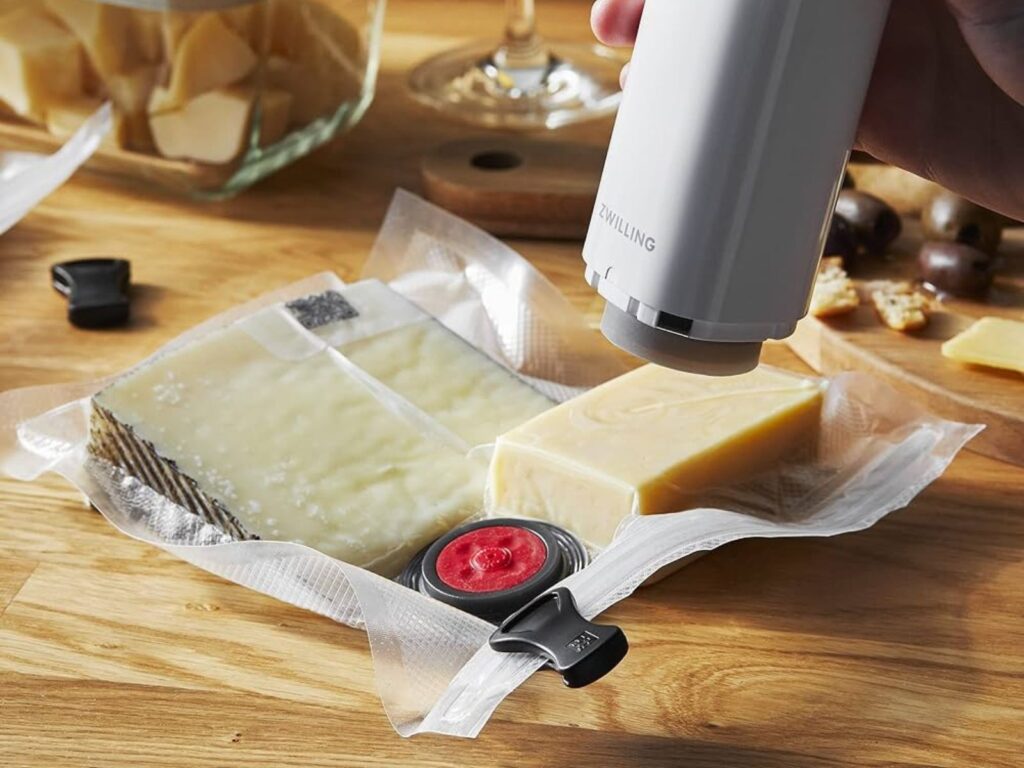
Finally, we have vacuum sealers. This simple piece of equipment has revolutionised the home cheesemaking world.
Vacuum sealers create an airtight environment around cheeses, eliminating exposure to oxygen. This absence of air prevents the development of unwanted moulds and bacteria on the cheese’s surface.
By locking in the cheese’s natural characteristics and protecting it from external contaminants, vacuum sealers ensure that the cheese matures consistently, resulting in a refined and harmonious taste. Of course, vacuum sealers can be used in conjunction with cheese ageing refrigerators or cellars.
Conclusion
Embarking on the journey of cheese making is not merely a culinary endeavour; it’s a pursuit of artistry, passion and tradition. Armed with the essential tools discussed in this comprehensive guide, you’re well-equipped to delve into the world of cheese making right in the comfort of your home.
As you embark on your cheesemaking adventure, remember that patience and practice are your best companions. With these essential tools, you’re not just making cheese; you’re crafting artisanal delights that tell a story with every bite.
So, roll up your sleeves, gather your equipment, and let the alchemy of cheesemaking unfold in your kitchen.
